Fire miles of morflot radio operators
By the beginning of World War II, the USSR merchant marine fleet, which counted 870 ships with a total deadweight of 2,1 mln. Tons, basically completed re-equipping ships with modern, at that time, means of communication. However, many ships still had communications equipment from the late twenties and early thirties. Each sea basin has developed a certain communication system. Radio communication was carried out according to international rules, mostly in clear text using international call signs. The ships kept in touch with the radio centers (RC) of their shipping companies, if necessary using domestic and foreign intermediate radio stations.
The first military radiogram was broadcast in clear text on the night of 20 June 1941 from Germany, by the radio operator of the Baltic steamer Magnitogorsk M. Stasov: “We were detained. From the port is not released. They do violence. Do not send other ships. ” The dispatch was suspended, but Magnitogorsk and five other Baltic vessels remained in the ports of Germany.
On the night of June 22, before the German attack on our country, four German torpedo boats near Fr. Gogland, attacked the Soviet ship "Gaisma". The steamer was sinking, and the radio operator S. Savitsky, while remaining faithful to the law of his profession — to keep in touch with the land in case of disaster until the last moment, continued to transmit messages about the perfidious attack.
On the very first day of the war, all ships on the Baltic and other seas were given an order by radio, to go immediately to the nearest ports and wait for special orders. From that moment on, the Soviet transport fleet began to switch to transport operations in the conditions of war.
All the sea basins of the Soviet Union became theaters of war, and the merchant navy found itself on the front lines of the struggle against the fascist aggressors. The war set for sea transport large tasks to carry out the transport of troops and military equipment for the formations and units of the Red Army operating on the coastal directions. Merchant ships were also involved directly in the conduct of hostilities, to supply the besieged bases and to evacuate industrial equipment, wounded and civilians from areas threatened by the temporary seizure of the enemy.
Transport sailors fleet with the outbreak of war, had to swim in special conditions: the enemy put up minefields, used Aviation and submarines to combat ships, carried out acts of sabotage in ports, during cargo operations.
23 September 1941, the year Hitler signed the order: "... All merchant ships that will begin broadcasting when they meet a German submarine must be sunk." Under these conditions, the communication mode of the courts has changed significantly. While in peacetime, radio transmissions to ships occurred after the coast radio station established direct communication with the ships and the reception of radio messages was immediately confirmed, in wartime ship radio operators, as a rule, carried out only radio reception, conducting continuous monitoring at call frequencies and distress, and periodically - Circular transmissions RC. All radiograms were received by the courts without being connected, which made radio operators especially attentive. Messages are now transmitted in closed text, the call was made by specially established call signs. Radio broadcasts of daily weather reports and storm warnings have ceased. The ships transmitted messages, being, as a rule, close to their destinations, maximally reducing official negotiations.
Since the beginning of the war, part of the ships, together with their crews, was mobilized in the Navy. In the early days of the war, in the Northern Fleet, several dozen fishing trawlers, motoboats and drifters were converted into patrol ships, minesweepers and used for patrolling, anti-submarine and anti-mine defense, and other tasks of protecting the water area. The command assigned a small military command to each ship: an officer, a signalman, a specialist in arms.
The heterogeneity of the communications means of ships, ships and coastal parts of the fleet created considerable difficulties in organizing communications. During the war, the mobilized ships were re-equipped with the shipboard communications equipment of the radio systems "Blockade-1" and "Blockade-2", developed in the pre-war years by teams of radio industry enterprises under the leadership of A. Berg. Only in the first months of the war in the Northern Fleet were re-armed with the radio stations Breeze and Bukhta 56 of minesweepers and patrol ships, 10 auxiliary vessels. On 15, patrol boats (bots) installed 5AK radio stations.
In the most difficult situation during the war years, turned out to be the Baltic Shipping Company. But, despite the heavy losses in the courts, the temporary occupation of many ports by the enemy, the Balts carried out their duty, providing transportation of troops, cargo, evacuation of the population in the initial period of the war, and in the liberated Baltic areas assisted the advancing troops of the Soviet Army. Even the sunken ship on a shallow spot, 2 miles from the coastline occupied by the enemy, was turned into an observatory equipped in the bow of the ship sticking out of the water. On the very first night, observers from Barta spotted fascist long-range batteries in the area of Old Peterhof, which bombarded Kronstadt, and according to their data, the gunners of the Kronstadt forts destroyed these batteries. Thanks to reports regularly transmitted from Barta, the enemy was severely damaged.
Of great importance was the organization of shipping on the Black Sea. In spite of all the dangers, the crews of the transports Belostok, Kursk, Kuban, Kalinin, Crimea, Berezina, Fabricius, the passenger-and-passenger steamer Pestel conducted their work. From 1 July to 16 in October 1941 of the year, they made 911 flights between Odessa and Sevastopol.
The work of the ship radio operators was extremely difficult. Observing the strictest radio silence to ensure the secrecy of the crossings, they continuously carried out receiving radio watches and were ready at any moment to receive orders and notifications. Timely reception of alerts, especially about the enemy's air, deprived the enemy of surprise attacks and greatly contributed to the tasks of the delivery of troops, weapons and other military goods by the courts. On the night of October 16, 1941, the radio center of the Odessa Naval Base, ceased communication with Sevastopol to the cruiser Chervona Ukraine, and its communications personnel on the boat of the Lukomsky fish fleet left Odessa.
Transport vessels also played an important role in the defense of Sevastopol. Here, communications workers ensured the successful performance of responsible fleet tasks. In conditions when the fascist submarines and aircraft tried to block areas of our ports and bases of the Caucasian coast, a special convoy service was created to protect the traffic, with the tasks of planning the traffic, forming caravans of ships and escorting them. From July 1942 to January 1943 alone, warships and transports made more than 6000 flights with troops and cargo.
At the same time, measures were developed to ensure the secrecy of communication between convoys (reducing radio traffic to a minimum, using tables of conditional signals, etc.). Only the commander of the convoy had the right to transmit radio messages, the rest of the ships could work on the transmission only when an enemy convoy was detected. Between themselves, ships and ships of the convoy carried out only a visual connection: by day with a semaphore, and at night by a darkened lantern.
The Black Sea Fleet liaison department created special liaison teams for the convoys from the personnel of the ships under repair. The communication group consisted of five radio operators, two acoustics and three signalmen with additional means of visual communication. Portable VHF radio stations were issued to the MO boats. The captains of the transports have completed short courses. Thanks to the good organization of communications, observation, reliable counter-cocking defense and other measures taken, the Black Sea seamen successfully coped with the task of providing transportation.
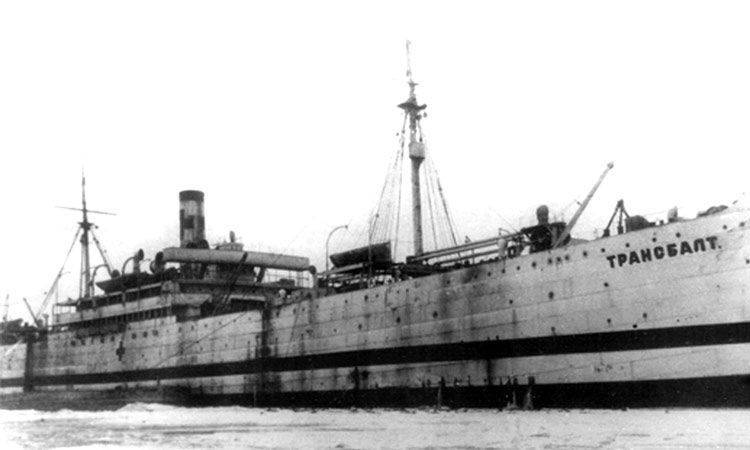
Since the Baltic and Black Seas the enemy closed for external transportation, Murmansk and Arkhangelsk turned out to be the most convenient for transporting weapons and other goods provided by the Allies to help the Soviet Union. The first allied convoy from England to the USSR was 12 August 1941, and the entire Northern Fleet forces defended the arrivals (41 transports) and 738 descending (36 transports) convoys. On internal communications was conducted 726 convoys (1548 transport). Under these conditions, the role of Glavsevmorput radio stations has significantly increased. To improve the coverage of the situation in the eastern part of the operational zone of the White Sea Flotilla, the 2951 polar stations of the Main Sea Route were operatively subordinated to its headquarters, with the assignment of observation tasks to them.
In some cases (when sailing near their shores), radio communication was carried out through the radio center and the Glavsevmorput radio station (Dickson, Amderma and others). Radio communication with ships at the beginning of the war was very weak. In 1943, in accordance with the decision of the State Defense Committee, a group of communications officers of the Navy headed by engineer I rank R. Schwarzberg, who became head of communications of the Central Marine Route, went to the Arctic. By the end of 1943, the communication of the ships with the Glavsevmorput radio stations had noticeably improved.
The successful posting of convoys was largely determined by the organization of communication, its correct use, high communication processing in general and each communications officer, as this ensured the secrecy of the transition of convoys, reliable receipt of necessary information and quick passage of reports, orders, alerts in the frequently changing situation at sea. For example, in 1943, an operation was conducted to escort the AB-55 convoy (Arctic-White Sea, convoy No. 55), which ensured the return of the icebreaker I. Stalin "and ice cutter" F. Litke "from the Arctic to Arkhangelsk.
The importance of the activity of icebreakers in the North was so great that the question of this operation was considered by the State Committee of Defense, and its leadership was entrusted to the commander of the White Sea flotilla. The communication of the flotilla headquarters with the commander of the convoy was provided for by radio and in the radio networks of the flotilla headquarters and the Main Sea Route. The ships of the convoy were ordered to strictly observe radio disguises, prohibit the transfer, and support forces to restrict short wave transmissions and extensive use of communications through monitoring and communications services (SNS) posts. To transmit the reports of the commander of the convoy, the radio station of the flagship of the convoy had to be included in the Glavsevmorutu radio network.
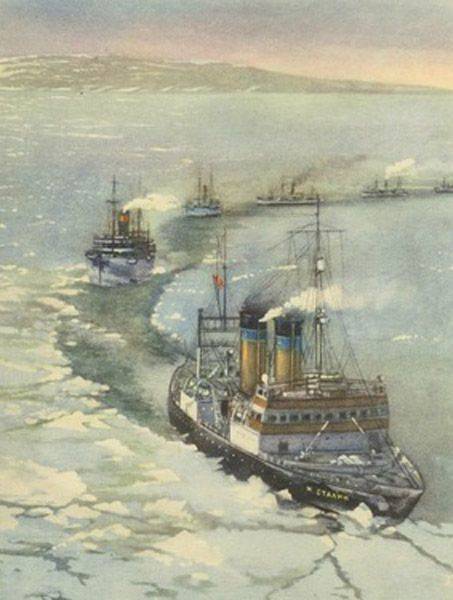
During the operation, icebreakers passed 2600 miles, of which 1600 was miles in ice, through areas of active activity of German ships and submarines. For 27 days of operation, the flagship ship of the convoy transmitted the entire 3 radiogram, with a low power transmitter through the nearest radio stations of Glavsevmorput. At the same time, the commander of the convoy received timely all operational information, up to and including ice reports. 44 radiograms were taken with a total capacity of the 38 043 group.
In the conditions of active radio intelligence of the enemy, special attention was paid to the stealth radio communications of ships and vessels at sea. In the late autumn, 1944, on the instructions of the State Defense Committee, again left a detachment of icebreakers from the Arctic (icebreakers "I. Stalin", "North Wind" and icebreaking vessels "Murman" and "Dezhnev"). The task was complicated by the fact that escort ships were to meet icebreakers in exactly due time and in a certain place at the edge of the ice. In the case of late ships, the ships were left unprotected, and with a premature appearance, the enemy could find a meeting place. It was necessary, with the full radio silence of the icebreakers and without using their call signs, to inform the detachment command of the situation and, in a timely manner (within 24 hours), to transmit the report to the fleet command on the time of the launch of the icebreakers to clean water.
In order to accomplish this task, the designated coastal radio stations exchanged information intended for the detachment among themselves so that they would be received by the ice-breaker communications personnel. The report of the detachment commander was transmitted at a strictly fixed time, with a short conditional signal - five points. Thanks to the reliable work of the signalists (the flagman signalman of the convoy — G. Tolstolutsky, in the post-war years, vice-admiral, head of communications of the Navy, laureate of the USSR State Prize), the important task was successfully accomplished.
Sailors of the northern shipping companies showed heroism in ensuring the maritime transport. Bright page inscribed in history World War II crew of the ship "Old Bolshevik", marching as part of the convoy PQ-16. Only in three days the sailors of the ship repulsed 47 attacks of enemy aircraft. 27 May 1942, when the convoy was subjected to another attack by bombers, one bomb landed in the bow of the ship, where anti-aircraft guns were located. A fire broke out, in which the head of the radio station, V. Nitronov, actively participated. Having coped with the fire, the team brought a load of explosives, lagging behind the convoy ship to the Soviet coast. 28 June 1942 the ship was awarded the Order of Lenin. The captain of the vessel I. Afanasyev, the first assistant to the captain K. Petrovsky and the helmsman B. Akazyonok, were awarded the title Hero of the Soviet Union, the radio operator V. Mitronov was awarded the Order of Lenin. Almost all team members awarded orders and medals.
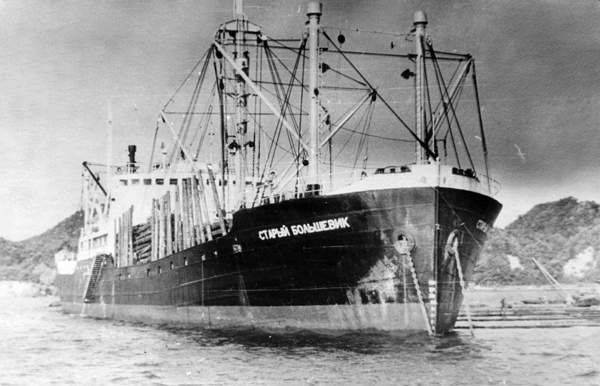
The icebreaking steamer “A. Sibiryakov ”, who boldly accepted the 25 on August 1942, an unequal battle with the German heavy cruiser“ Admiral Scheer ”. The steamer was killed, but its radio operators managed to notify vessels in the Arctic and Fr. Dickson, where the headquarters of the naval operations was located, was about the appearance of a fascist raider in our waters. In the course of the battle, the wounded radio operator M. Saraev raised and secured a downed antenna on the mast. Until the last minute radio operator A. Sharshavin remained on the combat post. As soon as he transmitted a radiogram: “The Pompolyt ordered to leave the ship. We burn. Farewell. 14.05 ”, an enemy shell pierced the radio room.
The message “A. Sibiryakova "helped to avoid a dangerous meeting of many ships, in particular the steamer" Belomorkanal ", the head of the radio station, F. Degtyarev, received an alarming signal.
We received a radiogram “A. Sibiryakova ”and on Dixon, where V. Ignatchenko was the communications chief of the naval operations headquarters, and managed to prepare for a pirate meeting. When the fascist raider approached the port, the gunners of the SKR-10 (icebreaking steamer “Dezhnev”), the steamer “Revolyutioner” and the field battery opened fire on him. After receiving several hits 152-millimeter guns mounted directly on the pier, the cruiser went into the sea.
The radio operator of the hydrographic vessel "Nord" L. Popov acted courageously. When the fascist submarine U-362 shot a tiny little ship from a cannon, the radio operator managed to send a message about the attack. The ships and aircraft of the Northern Fleet, dispatched by this report, a few days later discovered and destroyed the submarine.
Since the beginning of the Great Patriotic War, the nature of work and areas of navigation of ships in the Far East changed. Pacific sailors took their ships to the shores of America, Canada, Australia, New Zealand, to the ports of Southeast Asia and the Persian Gulf, and this drastically changed the conditions for their radio communication with the radio center Vladivostok.
Dangers lay in wait for ships here, far from the fronts. At night they went without lights, in the fog - without sound signals. Enhanced sea surveillance became mandatory for each team member. Military training was actively conducted on all ships, and weapons installed on ships were being studied. A lot of difficulties fell to the signalers. Additional radio equipment was installed on the vessels, the organization of communications changed significantly. It became necessary to hide the ships from the radio intelligence of the enemy up to the realization of their complete radio silence and, at the same time, to ensure the confident transfer of information to them in the absence of receipts. Therefore, the command of the Pacific Fleet, already in June 1941, approved special instructions on communications to the courts of civilian organizations in the Pacific. They ordered: before going on a flight of a communication device, inspectors of a communication service should carry out only the receiving radio watch from the moment of leaving the port, transfer work was allowed only in case of accidents requiring the help of other ships, or when attacking foreign warships and airplanes. All radiograms received from ships, receiving radio centers of shipping companies reported to the addressees and the duty officer of the fleet's military communications.
The communication system of the Far Eastern Shipping Company included Vladivostok, Aleksandrovsk (on Sakhalin), Sovetskaya Gavan, Tetyukhe, Nakhodka, Petropavlovsk-Kamchatsky radio stations. In addition, radio communication with vessels located in the area of Petropavlovsk was provided by the radio stations of the Joint Stock Company of Kamchatka (AKO), and with vessels near the bay of Provideniya and Cape Schmidt - radio stations of the Central Marine Route.
Radio communication with vessels was carried out mainly on short waves. In order to improve the reliability of radio reception of reports from vessels at the receiving centers of the fleet and the North Pacific Flotilla, permanent radio watches were opened. As P. Smirnov, head of communications of the Pacific Fleet during the war years, said, communication with the vessels of the Far Eastern State Maritime Company caused a lot of trouble, especially in the 1941 year, until the special gathering of captains and navigators of the shipping company clarified the current regulations on organizing communication with the vessels. In the future, communication has improved significantly.
The Japanese carried out openly piracy actions in relation to the Soviet courts. On the recommended course from Petropavlovsk to Vladivostok, their warships detained the steamer Angarstroy. The vessel was subjected to illegal inspection and was escorted to the port of Kushimoto by escort. Having accused of transmitting a military report over the radio, the Japanese interrogated the crew for ten days about the existing order of communication with the shipping company, tried to find and confiscate the ship’s radio magazine, which, even before the search, was burned together with other secret documents in the stoker’s furnace.
Famous sea captain N. Malakhov recalled about the tension of the situation in which the ocean navigation of the Far-Easterners took place: “We are going in a zigzag. We conduct the most careful observation of the horizon ... A radio operator brings 5-6 signals from torpedoed ships every day. ”
The head of the radio station of the Kolkhoznik steamboat torpedoed on January 16 of 1942 on the approach to the port of Halifax (Canada), N. Protsenko transmitted a distress signal, remaining in the radio room of the sinking ship, until he received confirmation of the reception of his signals from the radio stations of New York, Boston, Halifax, Sit in the boat, he did not have time.
In the spring of 1945, when there were still battles in Germany, diplomats of countries from five continents went to the founding conference of the United Nations to the shores of California across the ocean. In mid-April, the Smolny motor ship moored in the port of San Francisco. To ensure the direct and independent communication of the Soviet delegations with Moscow, a powerful radio station was mounted on the vessel. The ship was stationed in San Francisco for the entire duration of the Conference, which ended on 26 on June 1945, by signing the UN Charter, and on returning home, participated in the landing operation on Fr. Sakhalin. On August 22, Smolny brought army headquarters and a communications company to the port of Maoka (Kholmsk), and after the war with Japan ended, Lieutenant General K. Derevyanko arrived in Tokyo and accepted the surrender of Japan on behalf of the Soviet Supreme Command.
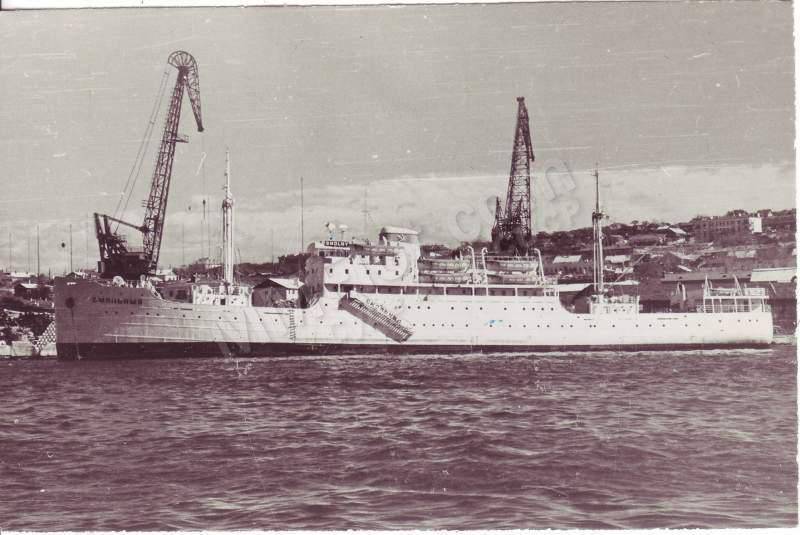
The hard test for the entire Soviet people, including the sailors of the navy, was the Great Patriotic War. Many sailors, including radio operators A. Spirov, A. Mokhovtsev, N. Karpov, E. Krivosheeva, A. Kogevin, N. Sapov, E. Divnov and many others, died in their service post. Despite the heavy losses, the seizure of many ports by the enemy, other difficulties, the navy during the war years transported about 100 million tons of cargo and more than 4 million people.
Sources:
Basov A. FLOT in the Great Patriotic War. 1941-1945. - M .: Science, 1980. C. 192-196.
Pashkov T. Transport during the Great Patriotic War. 1941-1945. Historical Chronicles. M .: Pan press, 2010. C.308-327. 346-356.
Tikhonov Yu., Soloviev V., Tarasov V. Marine Radio Operators. // Navy. 1985. No.8. C.61-63.
Kremer A. Fiery fairways. // The newspaper "Sailor". 1981. No.19.
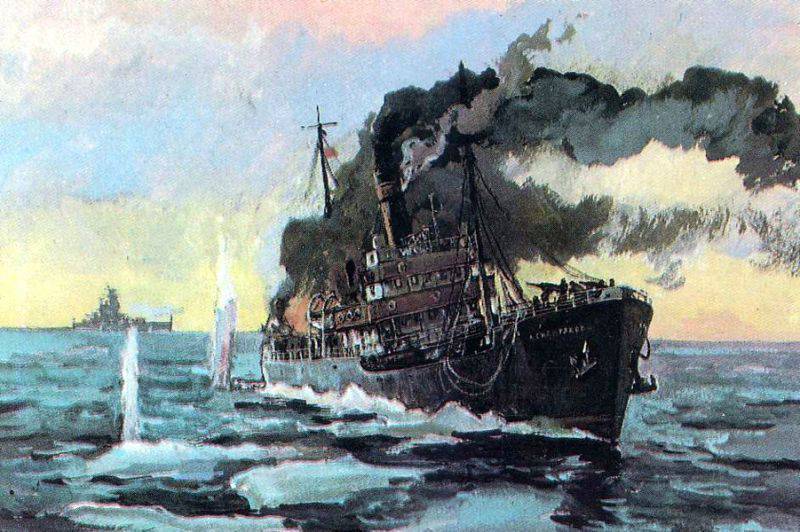
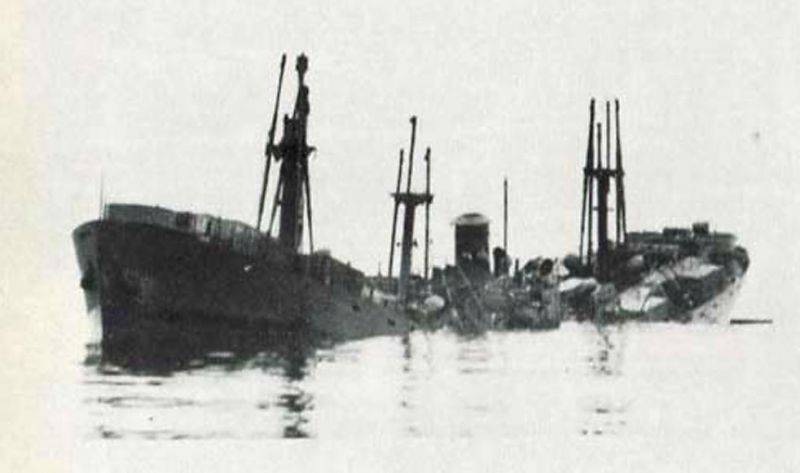
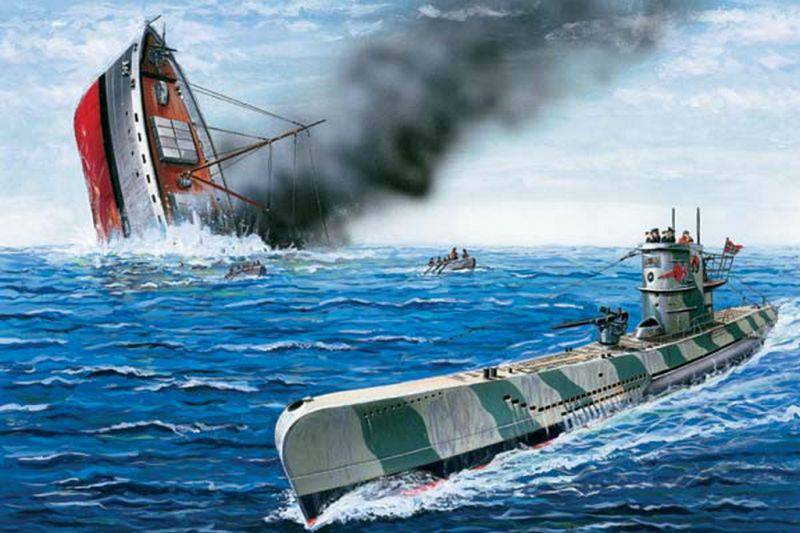
Information